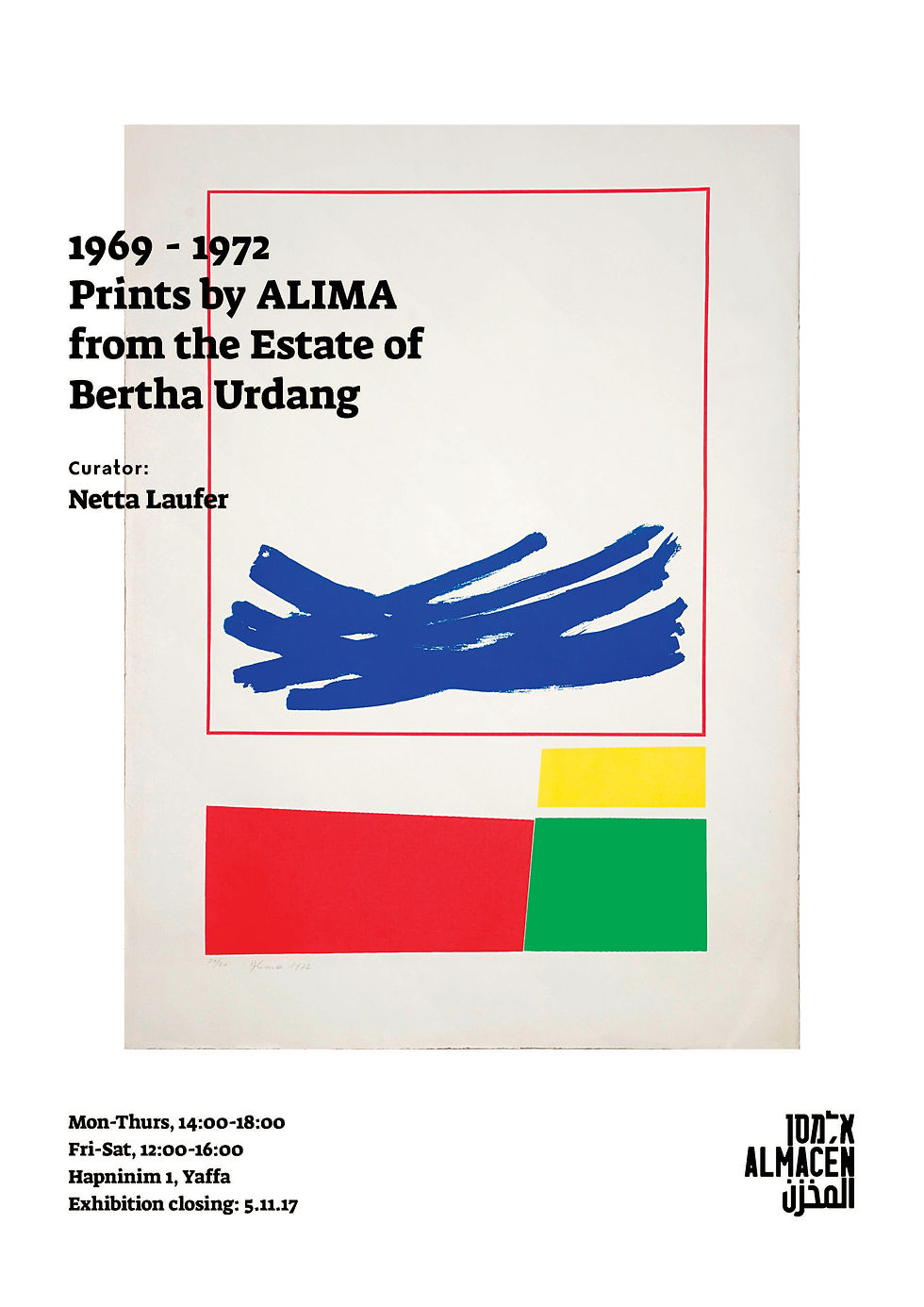1969 - 1972
Prints by ALIMA
from the Estate of
Bertha Urdang
Curator: Netta Laufer
16.9.2017 - 5.11.2017
The prints by Alima on exhibit at the Almacén Gallery form a distinct group: created 1969-1972, they are from the Estate of Bertha Urdang, gallerist, and Pathfinder, an important figure in the history of Israeli art. Urdang, the maternal grandmother of Netta Laufer, curator of the current exhibition, hosted Alima’s first one-person exhibition at the Rina Gallery in 1960. Founded in 1958, the Rina Gallery was one of the few venues in Jerusalem to exhibit contemporary art.
Alima was 28 years old at the time, having completed her studies at the Avni Institute of Art, Tel Aviv, only three years earlier. Urdang, who had championed contemporary art in Israel and later abstract Israeli
art in the USA, continued to exhibit Alima’s works throughout the 1970s. In 1972, Urdang mounted a one-person show by Alima at her gallery in New York City.
The current exhibition is not the place to examine
the issue of Alima’s relative marginality, but an opportunity to study to what extent her being a
woman was the reason. Laufer’s decision to exhibit Alima’s prints from Urdang’s Estate and not works by another artist provides the opportunity to contemplate possible parallels between Urdang, who operated in a very masculine sphere of art galleries of the 60's and 70's, committed to what she called her ״faith״ in Minimalism, and between Alima’s pathway in art. Bertha Urdang’s Estate collected Alima’s prints only. Her early works in this technique became her identifying mark. Printmaking, a medium which
has aspects of the mechanical and a certain ״democratization״ has been (and is) considered
״old-fashioned״ in Israel, as lacking the aura of the original. Urdang encouraged Alima through the purchase and exhibition of her works, unequivocal support for the particular pathway she chose.
Alima’s prints are suffused with issues of color and form, celebrating their self-containment – the autonomy of art. The prints, made more than five decades ago, maintain their crisp freshness, sense
of wonder, and bold determination.
Smadar Sheffi



Describe your image

